So I was bragging about having soakwells delivered to some of my peeps, only to be greeted with a mixture of joy at progress, and confusion about what they were.
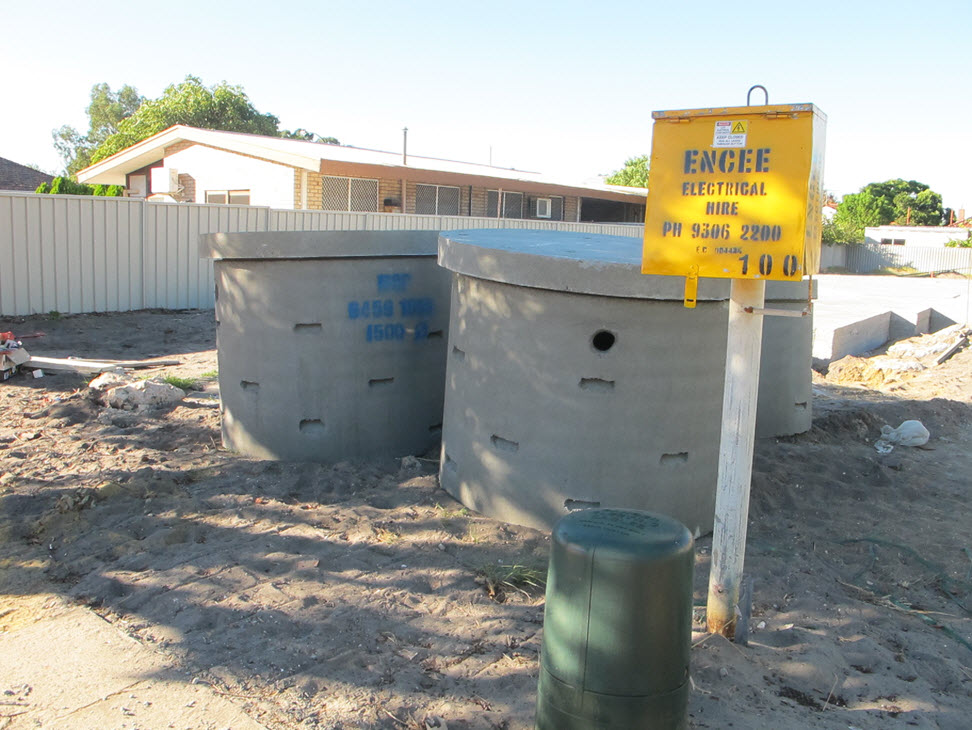
Soakwells, delivered! We have Mama Soakwell, Papa Soakwell, and Baby Soakwell hidden behind the parents.
I thought it was just a thing everyone did, but apparently not. So I ended up doing a bit of research, and here is what I found out.
The buzzword is “Water Sensitive Urban Design” (WSUD). It’s actually not so new, it’s been around since the 1990’s and eventually led to the signing of the National Water Initiative in 2004.
WSUD takes the approach that urban stormwater runoff is a water resource that should be better managed, instead of it being a nuisance. The main principle regarding stormwater is to reduce runoff from the urban environment while at the same time providing for infiltration and groundwater recharge.
The idea is, rather than diverting stormwater to pipes that drain directly into rivers and streams (or sewage plants), stormwater is treated by capturing sediments, pollution, and nutrients through the retention and slow release of stormwater.
Enter the soakwell.
Residential development on the Swan Coastal Plain has differed from other areas in Australia, in that there has been a requirement for all rainwater that falls on a property to be retained and infiltrated using soakwells where soil conditions are appropriate… The stormwater then penetrates the soil and recharges the superficial aquifer. (Source: Stormwater Management Manual for Western Australia, Department of Water)
Residential soakwells seem to be standard practice in Perth, but only as far as private property goes. It seems that runoff from roads and other urban areas still go into drains.
What is a Soakwell?
A soakwell is a cylindrical (or cubic) structure (usually made of either plastic or concrete) with holes in it . They usually have a lid on top but no bottom, as you want the water to soak into the soil. Water gets into the soakwell by means of a pipe that collects runoff from the roof or other impermeable areas. There seems to be no evidence to suggest that either plastic or concrete soakwells are better. Well, not that I’ve been able to find. There are people with opinions, of course, but I’ve not seen evidence to back up those statements one way or another.
Are Soakwells Required by Law?
Regulations regarding soakwells (or more specifically, stormwater management) vary from council to council in Perth. Most councils require them, but some of them don’t. They may not be required if you have another way of catching stormwater, such as a rainwater tank. If you’re building and this is a requirement, it should be caught by the engineers when it goes through the planning process.
Your builder will probably include them in the base cost anyway, but you should check this. If after the contracts are signed, the builder’s plumber decides that another soakwell is necessary, you would need to sign off on this. I’m not sure how this fits in with legal requirements, but property owners have a legal responsibility to ensure that any water that lands on their property is retained on that property. If you have a water tank, soakwells are often still recommended in case of overflow during severe weather.
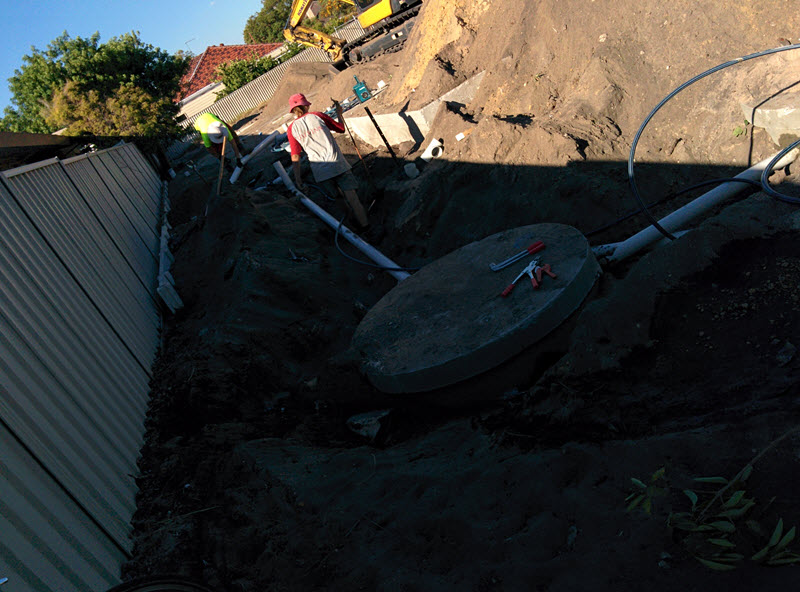
Soakwell well and truly dug in. With pipes, because the water has to get in somehow.
Problems with Soakwells
Soakwells apparently require maintenance. I read somewhere (but damn if I can find the reference now!) that they can be prone to the same problems that plague rainwater tanks – sediment build-up, mosquito breeding, algal blooms. But I think the main issue would be tree roots getting in. Tree roots get in everywhere they can! If you notice erosion or flooding, chances are the soakwell needs maintenance. That sounds like a big job to me, luckily there are companies that can do this.
What About Landscaping Around a Soakwell?
There is zero information I can find online about this subject. I think most of it’s common sense assuming you have knowledge of where and how the soakwells were installed. Even though they’re buried, they’re not buried that deep. Typically, they will have around 400-600mm of soil on top, so you’re not going to be able to plant large trees over them. Smaller soakwells may be buried more deeply than larger ones, perhaps because they’re just easier to handle. The architect made an offhand comment that you shouldn’t pave over a soakwell either, though I’m not entirely sure why that is.
If you’ve managed to read this far, you’re one brave soul! Tell me, do you have any soakwell experiences or knowledge to share?
References
http://www.homeimprovementpages.com.au/article/what_is_a_soakwell
http://en.wikipedia.org/wiki/Water-sensitive_urban_design
http://www.water.wa.gov.au/Managing+water/Urban+water/Stormwater/Stormwater+management+manual/default.aspx
http://www.allaboutsoakwells.com/regulations.html
http://www.soakwells.com/soakwells—perth-soakwells.html
http://www.soakwellsrus.com.au/common-myths/





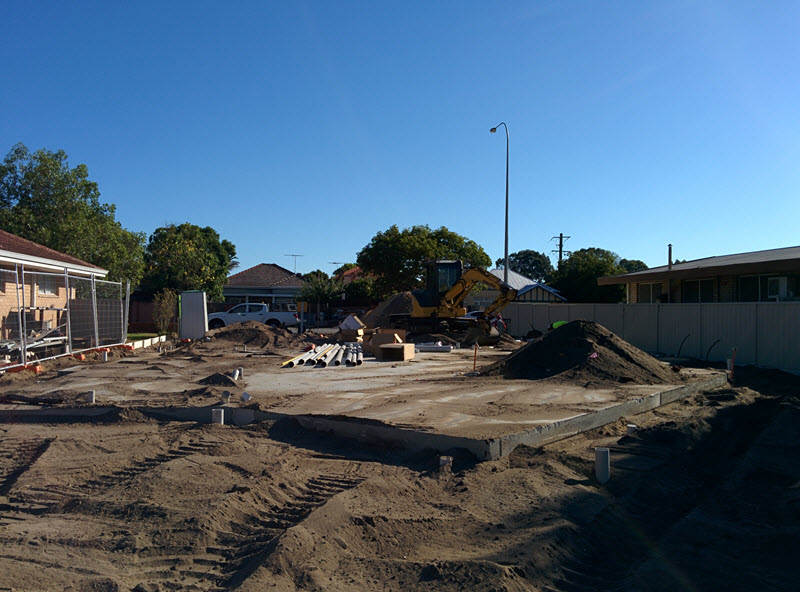
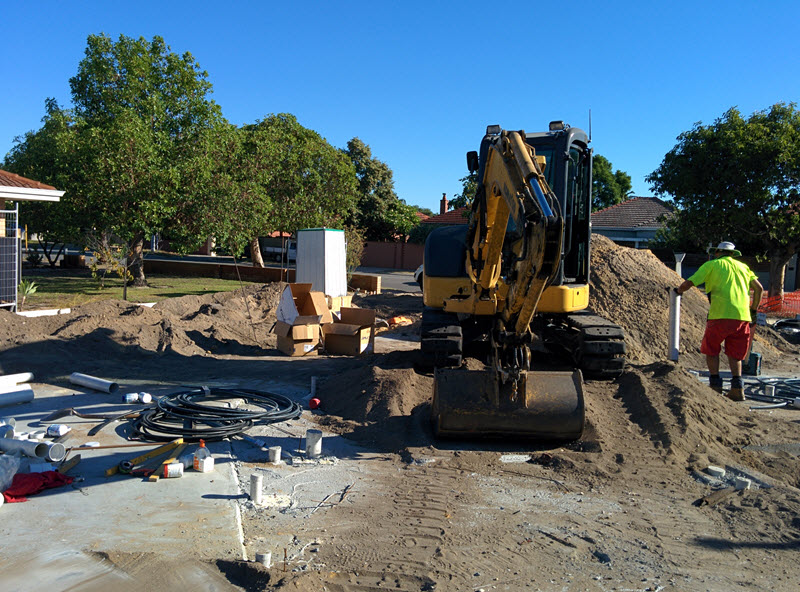
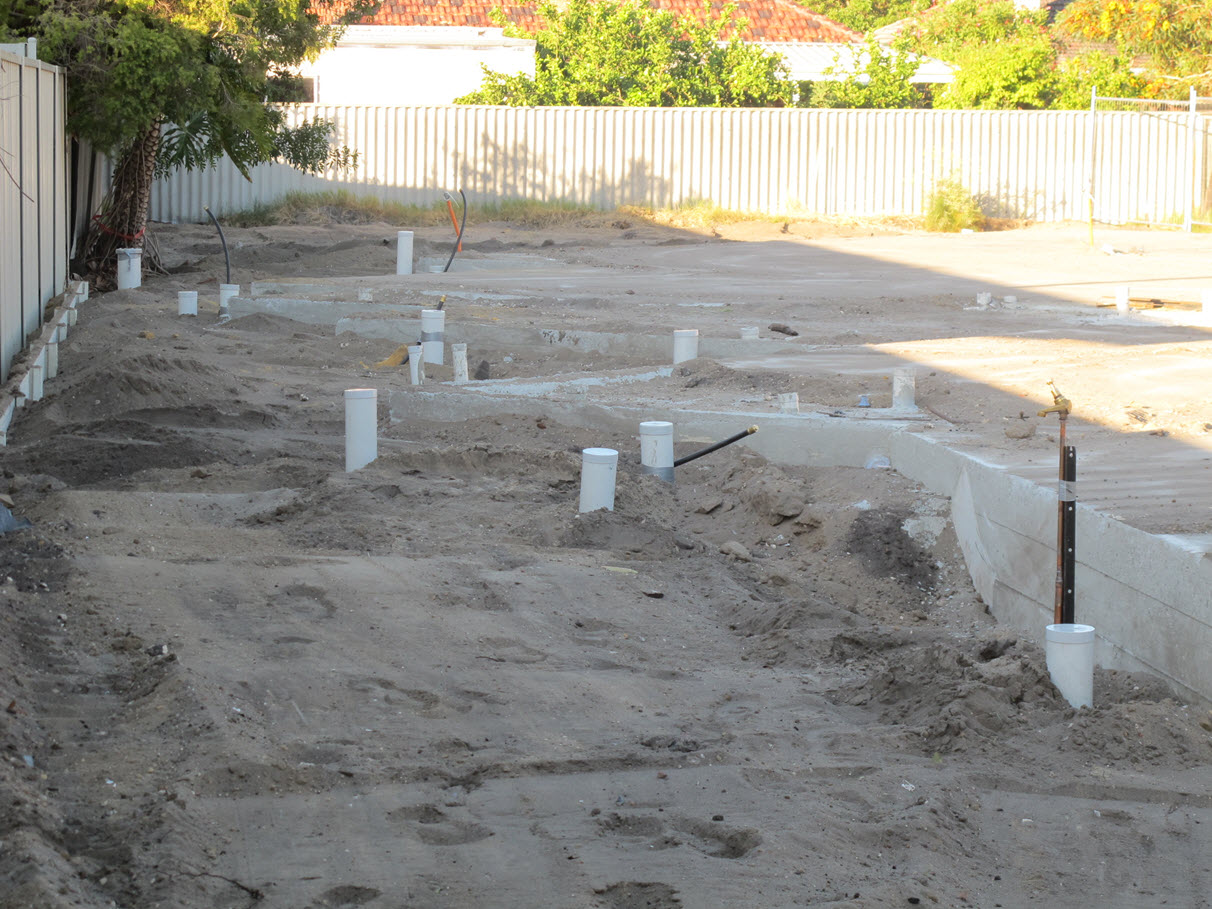




I knew very little about soakwells until I read your blog Trixee – I’m a lot more knowlegable now so thanks.
It seems a long time ago now since ours were installed so we will have to look at our plans before we start any landscaping/hardscaping. ☺
I’m really surprised they don’t give you more information about it, I guess it doesn’t occur to them as it’s hidden out of sight. I place them in the same category as septic tanks – you don’t want to know they’re there, but you need to know in case something goes wrong. I don’t know how much they’re prone to failure though, maybe it’s nothing to worry about at all. I guess I just like to know what I’ve got on my patch of dirt 🙂
Very well explained. Our excess water does drain to the canal, as permitted by our council, therefore we need to be extra careful about any products we use in our garden.
It’s different everywhere. It makes sense that you would be allowed to drain into the canal, seeing at that is effectively your backyard!
Thanks for explaining that trixee, I thought it was like an ag pipe… Oops!
We don’t have to have soakwells in our part of NSW, we have to have rain tanks and a rain garden. I don’t mind the rain tank but I think I’d rather have a soakwell than a rain garden. Out of sight and doesn’t interfer too much with the landscaping.
Rain garden sounds so romantic! I think I actually like the sound of that more than the soakwell, though I imagine it would require some planning to get right. I wonder if you can use a pond as a rain garden?
Hmm it is proving to be a bit of a money pit but as we have to have it I will try and make it as nice as possible. When it is all done and dusted I shall do a blog posting all about it and the final figure too! I think I’ll require a stiff drink when I tot it all up 🙂
I look forward to your blog post! I’ll have a stiff drink on your behalf as well 🙂
Congratulations on the family of soakwells! When I saw ours arrive, I knew what they were called and had a very vague idea of what they did. Thanks for the further explanation.
Thanks Lauren 🙂
I have never heard of them. Very interesting. We are planning on a rainwater collection system at some point.
You would probably have room for a very big tank, I’m guessing!
Haha! Yes just trying to find a good spot for it .
I’ve never heard of soakwells until I saw that last post had mentioned. Thank you for clearing up what they are. They sound like something that would be incredibly beneficial. I feel like this could help some folks in California. Even though it’s dry there’s still dew in the morning that can build up in the gutters which could fall into the soakwell.
This is a really helpful explanation of what soakwells are and do. I had never heard of them, but they seem like a really clever way to reduce runoff from urban areas. It’s surprising that they’re so close to the surface, I’ll have to see if I have any on my property. Thanks so much for sharing!
Jacques here for Perth Soakwells. We are really glad that you have referenced us in your soakwell research. We certainly do have soakwell knowledge and would be glad to answer any questions that you or your readers have. You may email us at info@soakwells.com for any direct questions. In all honesty however, soakwells should not require maintenance if installed properly. The problems you have mentioned such as mosquito breeding would only occur if the stormwater does not flow out of the soakwell of pipes. Debris entering the stormwater system can also be avoided by using geofabric. The tree root issue is real, however, that would be classified as damage and should be covered by insurance. Some good advice and articles over the years can be found at http://www.soakwells.com/blog.html , http://soakwells.blogspot.com.au/ and you can check out our google+ profile at https://plus.google.com/+Soakwells/posts where we have videos and commentary. We’re passionate about soakwell so hopefully in the future we can assist you or your readers.